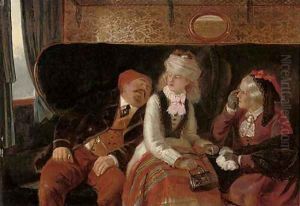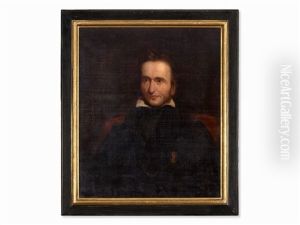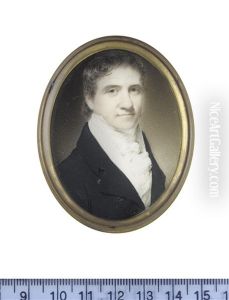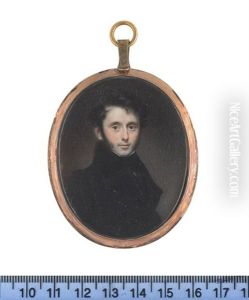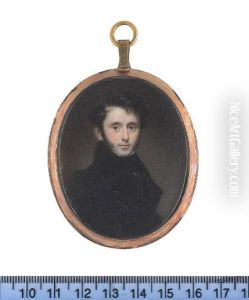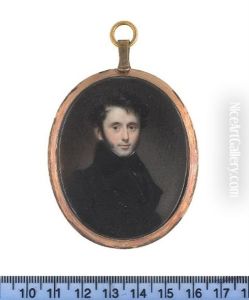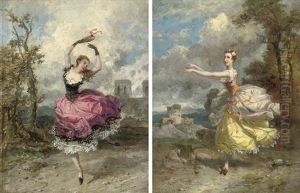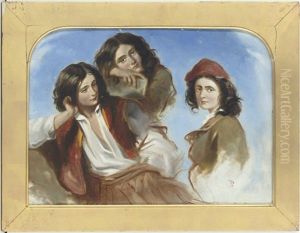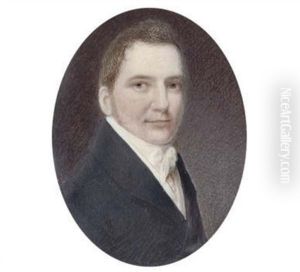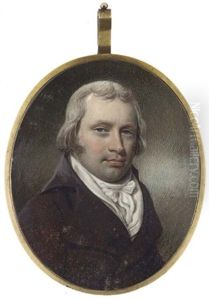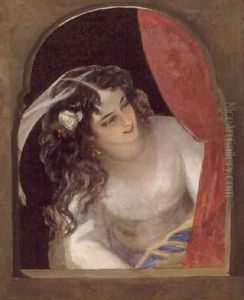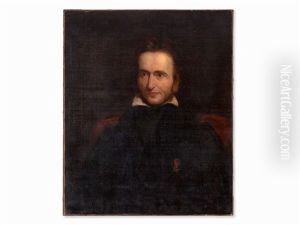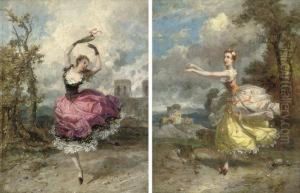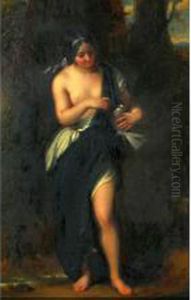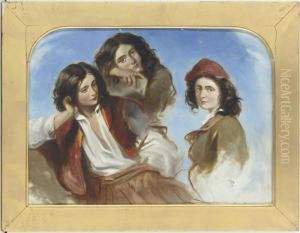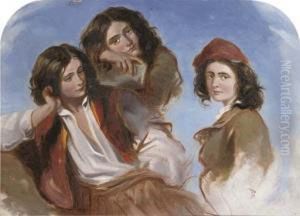George Patten Paintings
George Patten was a notable British portrait painter whose life and work spanned the better part of the 19th century. Born in 1801, Patten emerged from a period that was witnessing the transition from Neoclassicism to Romanticism in art, yet his work primarily remained rooted in the traditional portraiture style that emphasized the detailed depiction of his subjects.
Patten's career in art began after he received his training at the Royal Academy Schools, a prestigious institution that played a key role in shaping the talents of many artists in Britain. His education there not only honed his skills in painting but also provided him with opportunities to connect with influential figures and potential patrons. Patten's style was characterized by its elegance and the attention to detail, qualities that made his portraits highly sought after by the aristocracy and the upper classes.
Throughout his career, George Patten enjoyed considerable success as a portraitist. He was known for his ability to capture not just the physical likeness of his subjects but also a sense of their personality and status. This was a time when portraiture was not just an art form but also a means of asserting one's social position, and Patten's portraits served this purpose well.
In addition to his portrait work, Patten also dabbled in historical and biblical themes, although these works did not gain the same level of recognition as his portraits. Despite the changing tastes in art and the rise of new movements such as Impressionism towards the end of his life, Patten remained committed to his classical style.
Patten's contribution to British art was not limited to his paintings alone. He was also involved in various art organizations and societies, contributing to the development of art education and the promotion of British art. George Patten passed away in 1865, leaving behind a legacy that would be remembered for its refinement, skill, and the illumination of the British upper class through portraiture. His work continues to be studied and appreciated for its historical value and artistic merit.
